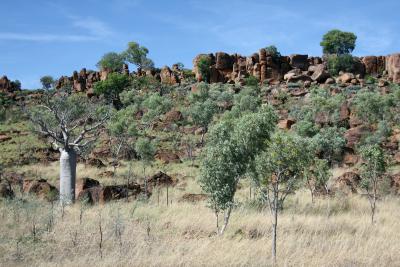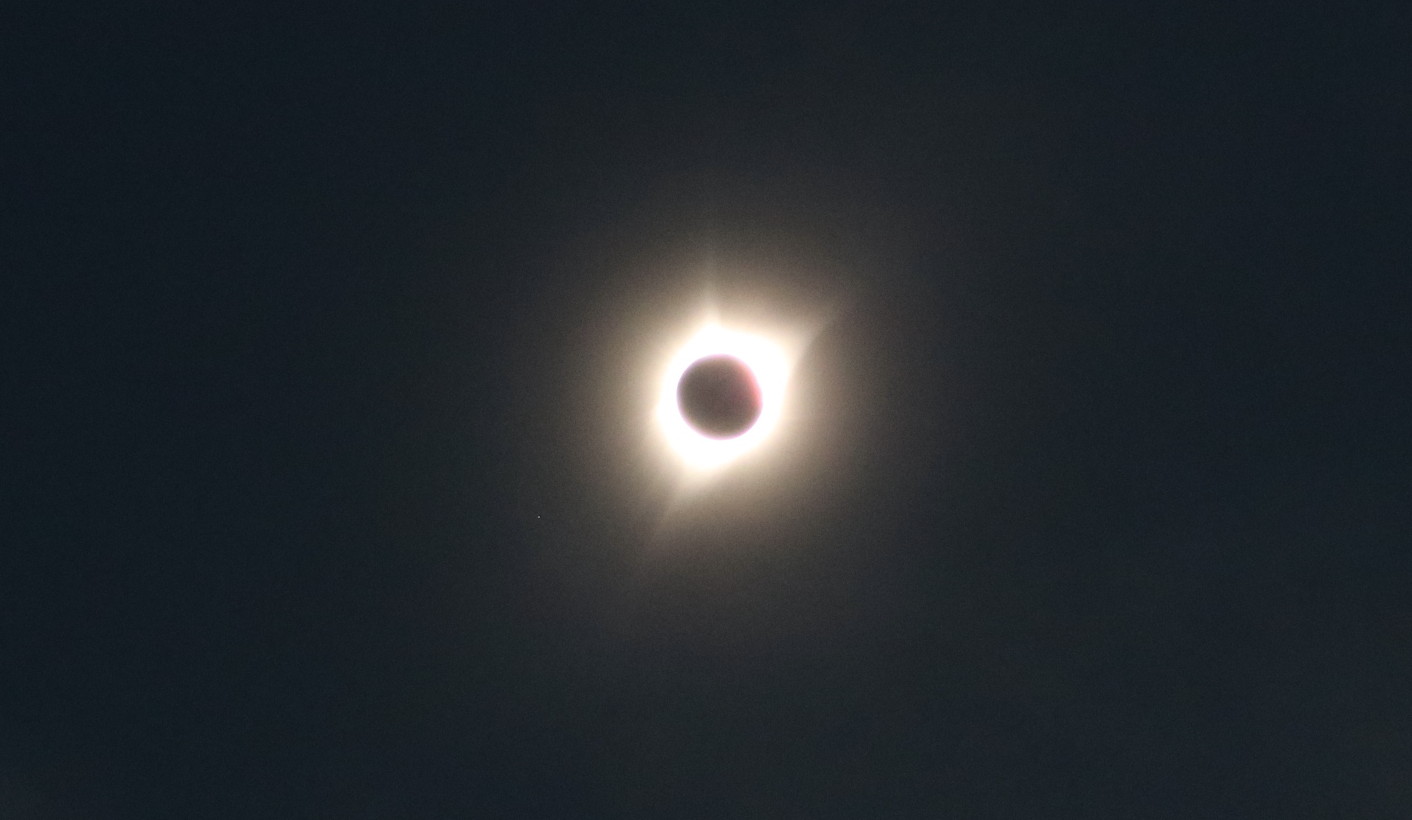Fitzroy Crossing
 Leaving Lake Argyle on Sunday, May 4 we made a stop for fuel at the first town we came to, Kununurra. It is a small town. We found a grocery store and picked up some of the fruits and vegetables we hadn’t been able to bring across the border. Once that was done we were driving almost all day long. We made another stop for fuel at Halls Creek and ate lunch at that stop then were back on the road until we arrived at our stop for the night in Fitzroy Crossing. This is the place where the road crosses the Fitzroy River. We covered more than 700 kilometers, our greatest distance traveled in a single day up to this time.
Leaving Lake Argyle on Sunday, May 4 we made a stop for fuel at the first town we came to, Kununurra. It is a small town. We found a grocery store and picked up some of the fruits and vegetables we hadn’t been able to bring across the border. Once that was done we were driving almost all day long. We made another stop for fuel at Halls Creek and ate lunch at that stop then were back on the road until we arrived at our stop for the night in Fitzroy Crossing. This is the place where the road crosses the Fitzroy River. We covered more than 700 kilometers, our greatest distance traveled in a single day up to this time.
Traffic was very light on this section of road. The road surface was generally good but we encountered numerous one lane bridges. Because of the light traffic, we only had to wait at one but we had to slow down at each one so we could anticipate a stop if the bridge was in use by opposing traffic. We have encountered only a couple of one lane bridges anywhere else in Australia. They were common in New Zealand but not here. We’ll see if this continues as we drive through more of Western Asutralia.
The road was straight and flat for huge distances with only an occasional dip through what is labeled a floodway. In times of heavy rain the depth of water on the road may be as much as 1 or 2 meters (3 to 6 feet) in some of these floodways. Rather than build bridges across small temporary stream channels the just let the water run over the road which speaks to the rarity of heavy rainfall in the area. It is an effective way to deal with roads if the traffic is light and the rain is rare. These are things we find in the US only in the most remote areas of the western deserts. I consider this an indication of population density which is very low in Australia along with a judicious use of sparse resources. The roads are just barely paved, seldom have shoulders and if shoulders exist they are usually gravel. Bridges are one lane or not used at all when the conditions will permit. This is the only paved road between Northern Territories and Western Australia. There is another paved road along the south shore of Australia. Two paved roads connect the western third of the country with the rest of the country.
The scenery along this route is a mix of distant mountains and buttes, grasslands and plains with scattered trees. We’re still in the tropics and the day was quite warm and the vegetation had a tropical look. Palm trees occasionally, other small trees and the occasional Boab tree. Boab trees are strange looking trees with massive trunks and small branches. When the get larger the trunks can be four or five feet in diameter and the branches are still short and fairly small. There are some that are really old and their branches have the same massive quality of the tree but still remain relatively short. These trees are a unique symbol of this part of Australia.
Along with the grasslands we are seeing cattle. The cattle are breeds commonly found in the tropics, Brahma or Brahma crosses. The cattlemen in this area were once described as kings in grass castles. We saw signs marking boundaries for some of the ranches or stations that were great distances apart. The size of these stations are very large with cattle able to graze huge areas. Water is the limiting factor for the productivity of the stations. We would occasionally see windmills which would be pumping drinking water for the animals but more commonly we would see the cattle around water holes, streams that still had pools of water. These will be drying up as the dry season is just beginning.
We pulled into Fitzroy Crossing as the sun was setting. There are three campgrounds in Fitzroy Crossing and the first was the Fitzroy River Lodge. It looked like a nice enough place but the campground was in rather rough shape. Campsites were on dirt and were littered with sticks and leaves. The campground was large and many sites were empty. Keeping up with the trees and vegetation can be quite a challenge in the tropics and they were definitely struggling with the lush vegetation on the grounds. The electric box where we plugged in had a large walking stick on it when I plugged in at night and the next morning there was a medium sized tree frog on the inside of the cover. We were both surprised when I opened the cover!
There were numerous kangaroos on the grounds. We’re seeing kangaroos more frequently as we travel west and we see them almost exclusively at dusk. Kangaroos are active at night and sleep during the day. We are seeing them only in a few areas. They are not as widespread across Australia as we thought they would be. The sightings are more a treat than a nuisance from our perspective. The natives may have a different view of their abundance but for a traveler they seem to be rather uncommon. Making a middle of the night trip to the restrooms I saw a half dozen kangaroos grazing on the grass lawn. They generally freeze or move away slowly when we are around. Most of these took off into the shadows once they saw me.



0 Comments
Recommended Comments
There are no comments to display.
Please sign in to comment
You will be able to leave a comment after signing in
Sign In Now